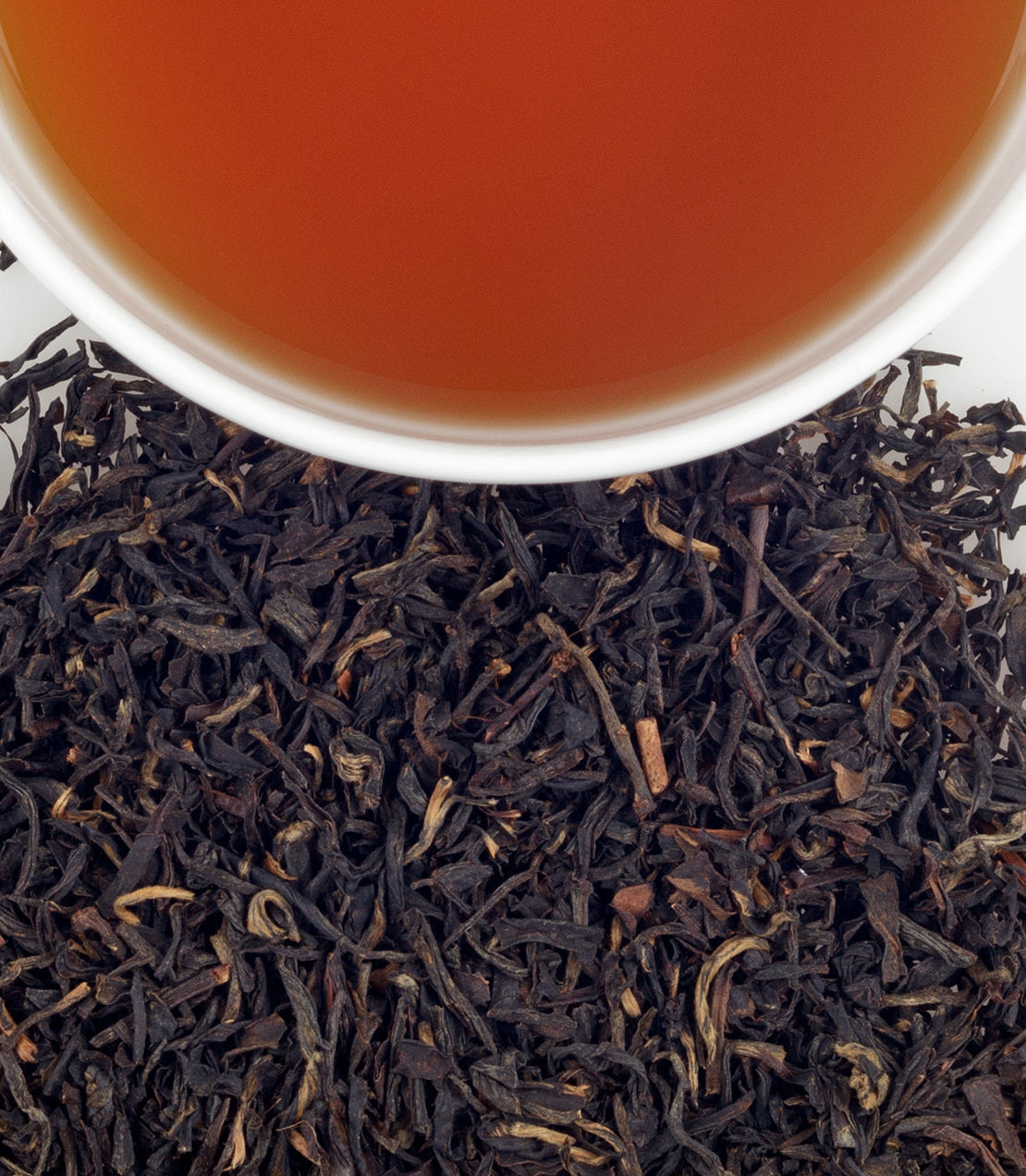What is Panyang Congou?
Link to the Panyang Congou I'm drinking today.
Simply, it is an old traditional red/black tea from Tanyang, Fujian in S.E. China.
Traditionally one of the sweetest forms of Chinese Red Tea - it's far less common now than in it's glory days - in part due geopolitical events, and part due to more popular newer styles of Red Tea taking over the market.
Linguistics Explanation:
Panyang = Tanyang; Congou = Gongfu
"Congou", or more properly "kang hu" is the Min Nan Pronunciation equivalent to the Mandarin "gong fu", which indicates the class of tea - "Gongfu Hong" - or "Red Tea, made with skill and attention".
As I speak Mandarin and not Min Nan I will use the modern pinyin transliterations that would be familiar to any schoolchild in China today.
Panyang is an old spelling of the city Tanyang.
Many old school tea companies use the old names from before the popularization of the wonderful system of pinyin transliteration.
Like "Peking Duck" instead of "Beijing Duck" - famous old names are unfortunately still very common.
Panyang Congou has been world famous for at least since it won gold at the Panama–Pacific International Exposition of 1915, and so the name persists in honour of that legacy.
- It should be tightly twisted, straight, and slender - sorted into uniform size and shape.
- The leaves are said to look "moist" with golden fuzz - but this traditional view is overstated when compared with more recent styles of red tea, like Golden Monkey and Jin Jun Mei.
- The fragrance is sweet and persistent.
- The flavour is strong and smooth - like Longan and Honey.
And, don't confuse African Red Tea (Roobios) with Chinese Red Tea!
Brewing Method
There are two main methods for brewing tea.
- Brew all the flavour out in one steeping.
- Multiple infusions over time.
Either way you want to use pretty hot water between 97 and 100°C (208-212°F) is common.
I enjoyed this batch from Harney and Sons starting at a very low 86°C (190°F) and progressively getting hotter over the course of 6 fantastic bowls.

History
Sometime in the Qing Dynasty, apparently between 1851 and 1874, at the foot of White Cloud Mountain in the village of Tanyang - A man named Hu Fusi developed a new black tea which he sold to Western Europe by way of Guangzhou.
The dates seem to be a bit early, but that's what I've got for now. He would be experimenting with a new style from nearby of Qimen in Anhui.
From that time it became more and more popular until the industry was wrecked by war with Japan, civil war, and communist trade restrictions on the overseas markets where it was most appreciated.
These days Tanyang produces much more green tea than red tea, reflecting the taste preference of the Chinese domestic market.
Processing:
Pick plump buds of "Tanyang Caicha" on a sunny day. Choose a bud and a leaf, or a bud and two leaves.
Wither in a room with good ventilation maintaining around 30 to 35°C (86-95°F) keeping the temperature and humidity in a delicate balance with the airflow. Starting with a higher temperature and cooling towards the end of the process, tea is laid out 10-15cm deep, and are flipped once every 20-30 minutes for 4-6 hours.
Manhandling the fresh leaves, squeezing them, and breaking off the stems, they loose their lustre and become a dark green. Along with 30-40% of the tea's weight, it's natural grassy character is lost, and a "clear fragrance" is found.
Rolling the tea is no longer done by hand, thank the gods. Healthy working conditions still need to be met as the machine should not be in direct sun and temperatures must stay 22 to 24°C (71-76°F) with higher than 80% humidity in order to properly control oxidization of polyphenols.
After about 60 minutes the tea clumps need to be broken apart before they overheat and are cooked.
This process should be done by hand for the tea to be considered "gongfu" tea as machine work will degrade the quality of the final product.
The oxidation phase lasts 2-3 hours.
In Chinese it is anachronistic called "fermentation", but in English we mostly try to use the chemically accurate "oxidation" rather than the direct translation - this is a point of confusion for many.
This careful process imparts the honey, longan sweetness, fruity fragrance, and bronze colour.
Drying must be timed appropriately to end oxidation, and is completed by baking the tea in baskets or in a machine 2-3cm deep at 90-100C for 15-20 minutes flipping every 5 minutes until about 80% dry.
After 1-2 hours cooling, it takes 20-30 minutes at 50-60C laid 3-4cm deep and flipping ever 10 minutes until there is less than 7% moisture.
Refinement involves sorting the tea leaves by size, first by machine, and again by hand while removing any imperfect bits - which may be sold as a lesser quality tea.
Related Teas:
- Tanyang, Bailin, and Zhenghe
The Three Great Gongfu Reds of Fujian. - Qimen (old, Keemun)
The original, and most famous, Gongfu Red. - Golden Monkey!!
Golden Monkey is a newer more "tippy" tea - which means that it uses younger "buds".